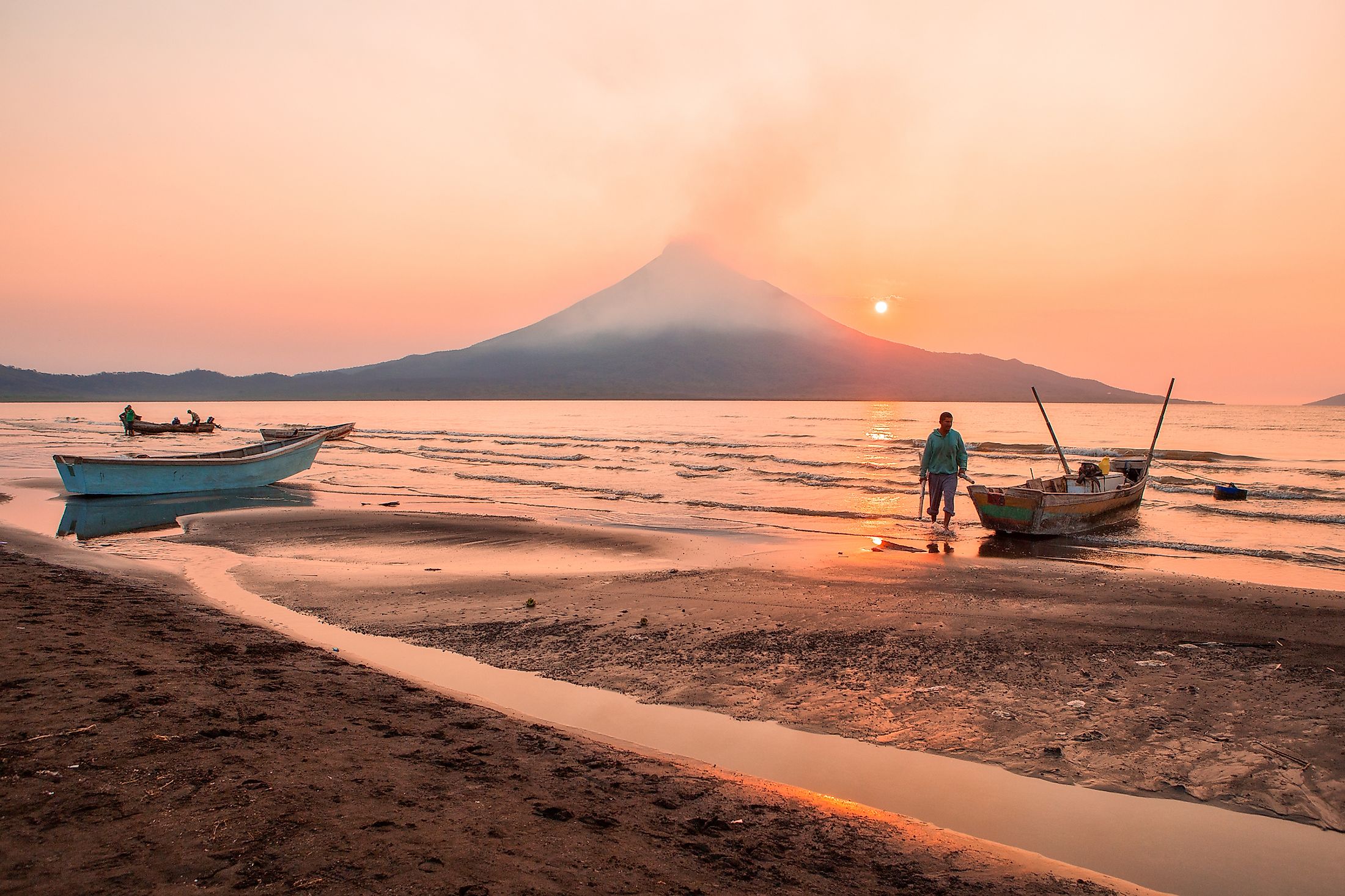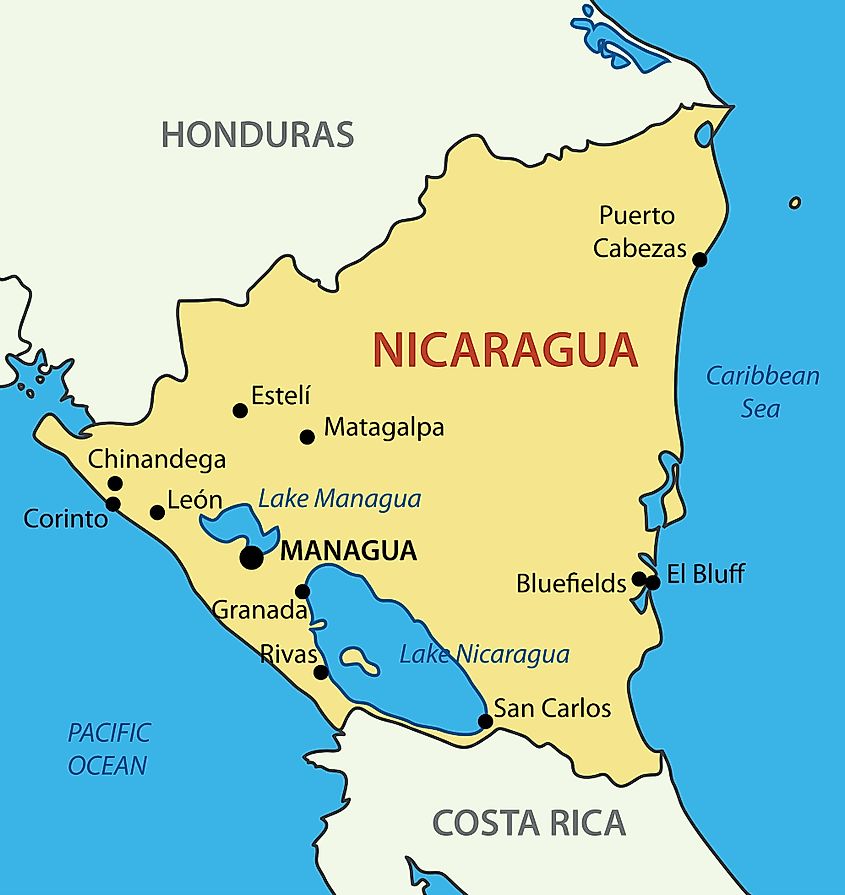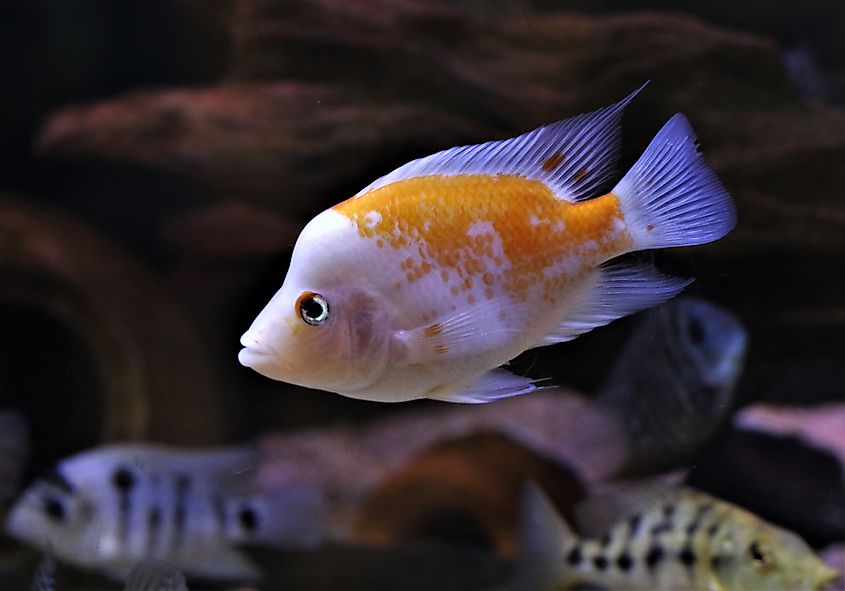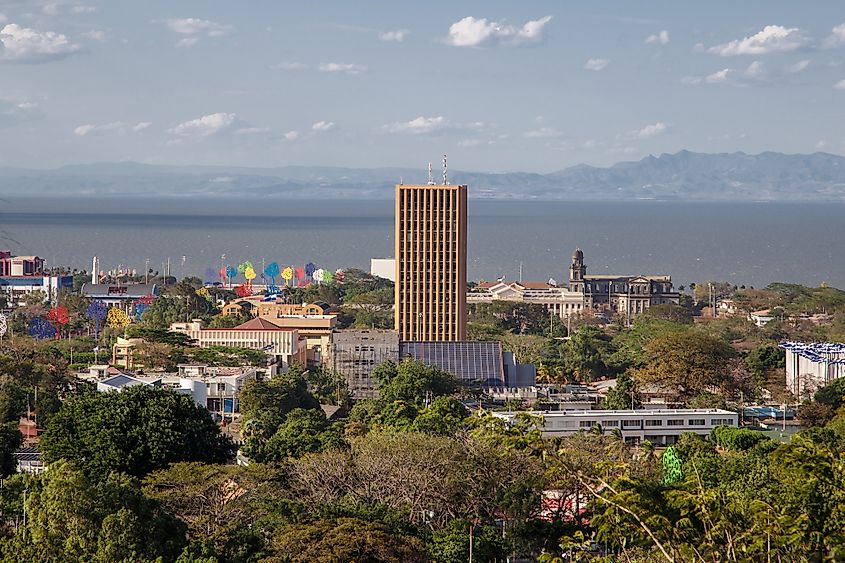
Lake Managua
Lake Managua, also known as "Lago Xolotlán" in Spanish, is located in the Central American nation of Nicaragua. The lake, spanning 395 square miles, lies next to the country's capital, Managua, and is connected to Lake Nicaragua, Central America's largest lake. The lake harbors many species of aquatic life in its tranquil waters. Moreover, the Lake Managua basin features many unique formations, like the Momotombo volcano, which rests along its shores. However, beauty aside, the lake has also witnessed many floods in the past century, causing notable damage in the area.
Location And Size Of Lake Managua

Lake Managua is located in western Nicaragua just north of the capital city, Managua. This area is rich in both human settlements and wildlife, thanks to various natural reserves. For example, Reserva Natural Complejo Volcánico Momotombo rests along the lake's northwestern coast and is home to the massive Momotombo Volcano. The lake itself is quite large, boasting a surface area of 395 square miles (1,024 sq. km), making it the second largest in Central America. This area is spread out in a wide horseshoe-like shape with a maximum length of 40 mi (65 km) and a maximum width of 16 mi (35 km). Within the lake, there are two uninhabited islands: Isla Rosa and Momotombito, a volcanic island.
As you move out to the surroundings, there are many streams and lakes that supply water, including the large Lake Nicaragua nearby. These two major lakes are connected via the Tipitapa River, which also drains Lake Managua. Along with being large on the surface, Lake Managua is also quite deep, with an average depth of 9.5 meters (31 ft). At its deepest point, the lake reaches a noteworthy depth of 20 meters (66 ft).
Climate Of Lake Managua
According to the Koppen Climate Classification, Lake Managua falls within a tropical wet and dry climate (Aw) zone. This climate zone features warm weather throughout the year, with temperatures never falling below zero. To this end, winters in Lake Managua are pleasant, lasting about four months from September to January. Throughout this season, January is the coldest month, with an average low of 21°C (37°F). As the hot season rolls in during March, temperatures gradually rise, reaching a median high of 35°C (37°F) in the hottest month of April. That said, the average temperature throughout the year rarely goes beyond 24°C (37°F) and 32°C (37°F). Thanks to this, visiting the lake is comfortable most of the year, with winter being the best time.
While temperatures remain similar throughout the year, the same is not true for precipitation. This is because the region has a definite wet season from May to November and a dry season during the rest of the year. So, most of the rainfall is within the six-month period, with September seeing a whopping 12.3 wet days. Lake Managua receives an average of 900mm of rainfall per year.
Wildlife Of Lake Managua

Lake Managua's tropical surroundings and abundant natural reserves make it a hotspot for wildlife in Nicaragua. Whether within the lake, on the lake's islands, or along the shores, this body of water supports a rich biodiversity. In terms of aquatic life, the lake is home to approximately 20 species of fish, including rainbow fish, mahi mahi, and trout. A step up in the food chain, alligators are also common in these waters, so you should always keep your eyes open. As you move further out to the shoreline areas, dozens of land animals use the lake as their water source. For example, the adjacent Chiltepe Peninsula Natural Reserve is home to coyotes, rabbits, iguanas, deer, and more. Put it all together and Lake Managua's ecological diversity is spectacular.
Flooding Of Lake Managua
As Lake Managua gets a defined wet season, periods of heavy rain have caused the lake's water level to rise significantly. While this is usually under control, it has led to three major floods in the past century. The first took place in 1933 and holds the record for the highest recorded water level of the lake. Following this, the next major flood took place 60 years later in 1998. Caused by the catastrophic Hurricane Mitch, the water level increased by 3 meters (10 ft) in 3 days. This led to flooding along the coast, which destroyed many homes near the coastline. Most recently, the lake flooded in late 2010, which led to even greater property damage along the coast. To avoid more damage, residential properties are not allowed below a certain elevation limit.
Pollution And Protection Of Lake Managua

Although it is a wellspring of natural beauty and wildlife, Lake Managua is threatened with extreme pollution. Often considered "the most contaminated lake in Central America," an array of issues has led to constant pollution throughout the past century. The most prominent pollutant is sewage, which is dumped into the lake from Managua, Nicaragua's capital. From residential trash to factory sewage, all sorts of waste is released into the lake. For example, the US chemical company Pennwalt created major issues by dumping mercury into the water for a span of 25 years. Combined with the sewage, the increased level of mercury caused notable damage to Lake Managua's aquatic life and visual appeal. The situation got so bad in 2007 that the area released a foul odor, which reduced tourism nearby. Thankfully, the government finally took notice in 2009 by opening a modern wastewater treatment plant. As waste is cleaned before entering the lake, the situation is improving with healthier fish and clearer waters.
From its unique shape to its pleasant climate, Lake Managua is a lovely lake in Nicaragua. One of the largest in Central America, people from all over now come to visit the stunning body of water. Along with the lake, one will adore endless hotspots nearby, such as the Momotombo volcano and the capital city, Managua. With so much to see and do, why not plan your trip to Lake Managua soon?











